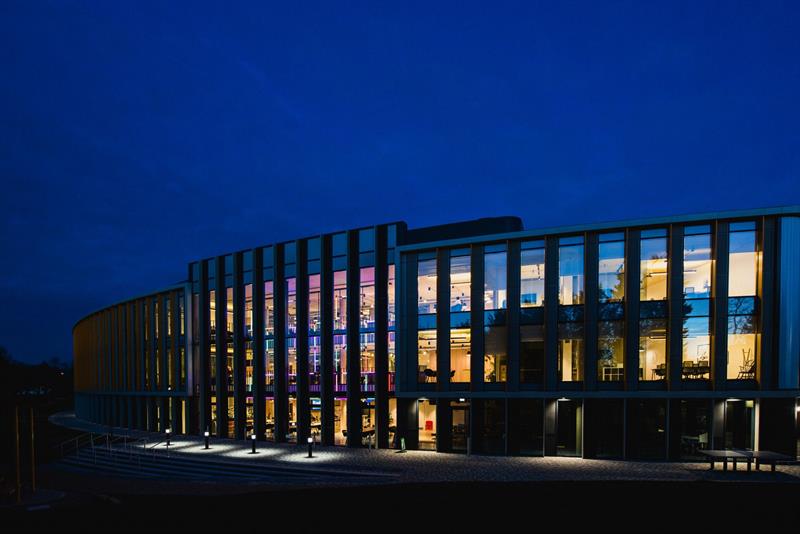In the time since its initial announcement over half a decade ago, 5G has been pitched, both to consumers and to business, as representing a total paradigm shift for the communications landscape. With its promise of massively increased bandwidth, infinitesimal latency and the rest, we have been led to believe that the standard and its attendant technology was going to prove a complete game changer.
While that may indeed prove to be the case, there is an enormous amount of work which still needs to be carried out before 5G can truly begin to fulfi what would appear to be its potential. This obviously includes in the realm of the technology itself, as symbolised by 3GPP’s continued efforts in relation to the standardisation process.
At the same time, the business communications market also needs to evolve, weighing up any number of potential new use-cases facilitated by the benefi ts outlined above. Despite what the adverts might say, there is still quite a long way to go before on-mountain remote shaving technology is likely to be rolled out at scale.
As readers of Land Mobile will already be aware, a key part of that process is the provision of testbeds and ‘accelerator’ projects, some of which we have already covered within these pages (for instance, the ground-breaking Bristol is Open).
With that in mind, in this article, we are focusing on CW’s (aka Cambridge Wireless) 5G accelerator, located on the campus of Cambridge Science Park, near the village of Milton. The project is interesting for a number of reasons, for instance the way in which organisers believe it is able to differentiate itself from other similar initiatives, specifi cally in terms of its relationship with participating businesses.
Another point of interest, however, is the involvement of Huawei, which has provided infrastructure across the site. This raises any number of talking points, not least the way in which the image of the company has evolved in the past couple of years, as well as – crucially – its relationship with the UK government and the UK market.
R&D is key
Abhi Naha is chief commercial officer for CW. Describing the origin and the purpose of its 5G testbed and accelerator, he says: “This is a partnership we began with Huawei about a year and a half ago. The objective of creating a private network and testbed was ultimately to look at the opportunities which present themselves in relation to 5G. That means the technical applications, but also the business applications.
“We built the facility during lockdown, with the process taking about three months. Once it was installed, we started to run these 12- week, fast-paced innovation programmes, based on going from proof of concept to proof of value.
“Obviously, there are other testbeds operating in the UK, and we collaborate with them, and we learn from what they are doing. The difference with us, however, is that we provide a private, standalone network – we didn’t need to liaise directly with any telcos – which is also customisable. We can integrate testing within the 5G network involving actual end-user applications.”

We were invited to visit the facility (pictured above) in May in order to witness a meeting of companies participating in the third iteration of the accelerator. These included automated vehicle specialist Conigital and extended reality for medical training company i3 Simulation, alongside Phinxt, which is developing robots for use within the warehouse environment. Also present was engineering company Renishaw, which is exploring potential ways in which 5G can potentially improve its operations on the shop floor.
Discussing companies’ rationale for getting involved with the programme, CW CTO for special projects, David Roberts, says: “Former participant Ubisense, which works with location sensors in the automotive sector, had a variety of reasons for participating. In the first instance, they wanted to show potential customers that 5G is actually real, as well as demonstrating the potential benefi ts and risks of adoption. They were also able to explore cost of ownership, which again they could then take back to clients. Some were able to fi nd a valid business case, some weren’t.
“We screen these companies in the first instance, asking them what problems they have and how they feel 5G might be able to help them. The infrastructure is designed to offer standalone 5G, but also 4G as well as NB IoT, so we can help them test according to their needs. We’re trying to ascertain the user experience problem which needs to be solved, and if 5G isn’t the answer, maybe something else is.”
As chief executive officer of Huawei’s research and development effort in the UK, Henk Koopmans has been involved in the Cambridge testbed from the beginning. Discussing the importance that the company places on this kind of R&D, and where it fi ts in with the company’s global business model, he says: “It’s a philosophy that’s really important to the company, with about half of 200,000 staff worldwide working in research and development.
“We have two approaches, one of which is in relation to specific business groups such as the enterprise and consumer divisions, with the other sitting under what we call the 2012 labs or Inspiration Lab, where we’re not sure what the application is going to be, but we know the world is likely to need it. The Cambridge testbed falls under that.”
"We’re not sure what the application [of 5G] is going to be, but we know the world is likely to need it"
Elaborating on the latter approach, Koopmans describes it as the equivalent of helping to develop hundreds of individual start-ups, inhabiting any number of verticals. “The idea is that we explore in a particular direction, and then see how it goes,” he says.
“One of the things that we’ve been doing recently is using our AI to accelerate the discovery of new medicines. Obviously, we have no specifi c knowledge of that as a company, but we bring our expertise, the healthcare sector bring theirs and together we come up with new things.”
Huawei’s involvement in the Cambridge project is interesting not only from the point of view of the technology itself, but also in terms of how the company is viewed more broadly. Discussing its position in the UK following the government’s recent decision to order the removal of all the company’s 5G networking equipment by 2027, Koopmans says: “I can only speak from an R&D perspective, but for example on AI… we’re working with the UK government and the European Commission on a proposal for AI governance at the moment. And the UK government has welcomed that proposal.
“Operationally, I’d say that we have an excellent relationship with various departments in government. That could be the Office of AI, or agencies like Innovate UK. The United Kingdom remains a very good environment for us to innovate and operate.”
The developer perspective
While this isn’t the place to speculate or comment on the aforesaid UK government decision, you can only imagine that there has been an impact, not least from a marketing perspective. One group currently using Huawei’s 5G technology, however, are the participants in the CW accelerator.
Discussing Renishaw’s decision to become involved, co-director of Industrial Metrology, Derek Marshall, says: “Our core business is industrial metrology process control, using touch probes to monitor different aspects of the industrial process. For instance, where’s the location of the work piece that an operator’s trying to cut, what’s the size of the cutting tool and so on.
“We’ve started to become interested in 5G and Industry 4.0 in order to help our customers exploit the advantages the technology will bring to the ‘5G enabled smart factory’. One such advantage is that of fl exibility in factory floor production lines, which will no longer need to be constrained by the physical data infrastructure.

He continues: “As manufactured designs and product processes are evolving more often, the ability to quickly adapt production lines to produce new parts is seen as the key to the future of manufacturing.” According to Marshall, the company’s interest in the Cambridge accelerator came from various ‘road mapping’ conversations, centring in part around the transmission of time-critical information.
“We wanted to explore the technical limits of the 5G network,” he says, “in order to understand whether it could be used to directly infl uence production machinery or report on a live process. You imagine that the technology should be capable, but coming into the project, we just didn’t know.”
Another company looking to scope out potential capabilities and ‘industry trends’ is Conigital, which is exploring “remote monitoring and calibration” for automated vehicles when encountering potential ‘edge’ situations (for instance, the potential need to go up on the pavement).
“Part of the challenge for us,” says company CTO Tom Robinson, “was simply getting access to a private 5G network, so being involved with the accelerator has been useful. Our assumption at the moment is that [we’ll need to operate on] a private network so that the automation isn’t impacted by sudden demand from commercial users. If we could guarantee slicing, we’d go that route, but it’s not there yet.”
The CW 5G testbed is a vivid illustration of the kind of ‘community’- based industry model most likely to get next-generation broadband over the line as a proposition for roll-out across different verticals. It also helps show us – crucially – what our ambition can and should be.



